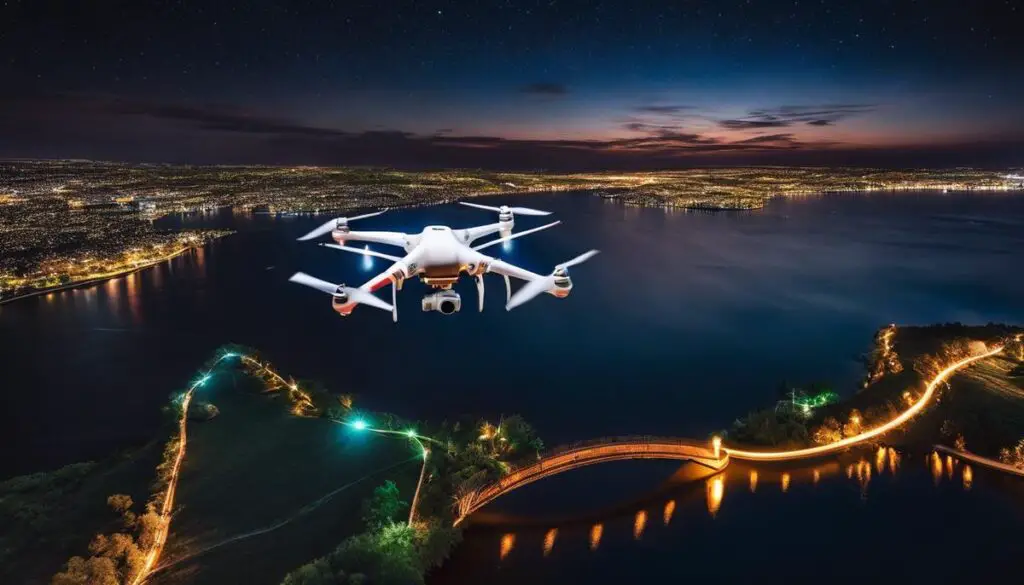Welcome to the exciting world of drone fishing! This innovative approach to fishing utilizes modern drone technology to help you cast further and catch bigger fish. Drone fishing has gained popularity in recent years due to its numerous advantages over traditional methods. In this comprehensive guide, we will explore the various aspects of drone fishing, including choosing the right drone, understanding necessary equipment and accessories, adhering to regulations and safety practices, and mastering the art of flying and maneuvering the drone for successful bait drops.
Understanding drone fishing
Drone fishing has become increasingly popular in recent years as more enthusiasts and hobbyists discover its benefits. The concept is simple: use a drone to carry and drop your fishing bait at the desired location, allowing you to reach areas that were previously difficult or impossible to access with traditional fishing methods. In this guide, we’ll explore the basics of drone fishing, its advantages, and reasons behind its growing popularity.The Basics of Drone Fishing1. Choose the right drone: The first step in drone fishing is choosing the appropriate drone. Look for one with a good carrying capacity, stable flight, and a long flight time. Some drones are specifically designed for fishing and have built-in features like fishing line release mechanisms or bait-dropping accessories. 2. Attach your fishing line and bait: Once you have a suitable drone, the next step is attaching your fishing line, either using a specialized drone fishing rig or creating your own attachment system. Some popular options include using release clips, attaching the fishing line to the drone’s legs, or using a payload release system. 3. Scout for a good fishing location: Utilize your drone’s camera to scout the waters and find the perfect location to drop your bait. The drone’s aerial perspective can help you spot fish congregates, underwater structures, or other areas where fish may be lurking. 4. Initiate the bait drop: Once you’ve found a promising spot, fly your drone to the desired location and drop your bait using the release mechanism or attachment system. This can be done either by pressing a button on your remote control that triggers the release mechanism or by flying your drone back towards you until the line tension becomes strong enough to detach the bait. 5. Reel in your catch: With your bait in the desired location, it’s time to wait for the fish to bite. Keep an eye out for any signs of interest from the fish, and once you have a bite, reel in your catch using your fishing rod.Advantages of Drone Fishing1. Improved accessibility: Drones allow you to reach areas that traditional fishing methods cannot, such as deeper or more distant waters, fallen trees, or other structures. 2. Increased casting distance: Drones can carry your bait much further than you could cast, allowing you to target more distant fish. 3. Precision bait placement: With drone fishing, you can drop your bait precisely where you want it, ensuring it reaches the most productive fishing spots. 4. Reduced environmental impact: Drone fishing allows you to leave your boat docked or avoid wading into the water, reducing noise pollution and the potential for disturbing fish habitats.Growing Popularity of Drone Fishing1. Technological advancements: Advancements in drone technology, such as improved flight times, stability, and camera systems, have made drone fishing more accessible and practical for hobbyists. 2. The thrill of innovation: Many anglers are drawn to the novelty and excitement of using cutting-edge technology to enhance their fishing experiences. 3. The desire for a challenge: Drone fishing provides a new challenge for experienced anglers looking to add another dimension to their favorite pastime. 4. Increased awareness: As more people share their drone fishing experiences on social media and online forums, interest in this unique fishing method continues to grow.Drone-Fishing
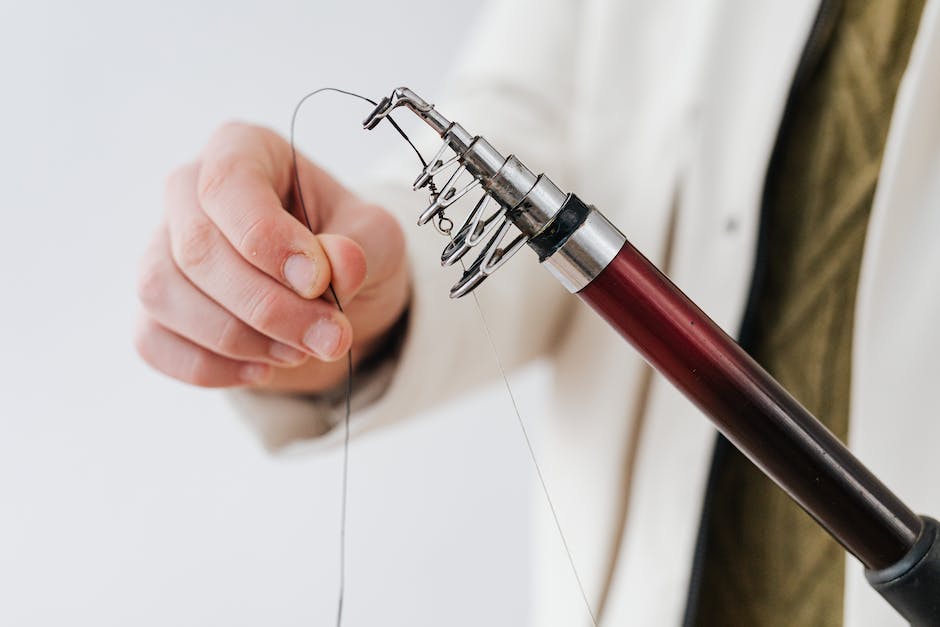
Choosing the right drone
Start by researching the market: Browse online stores, read reviews, and watch videos of drone fishing bait drops to get an idea of what works best for your needs. This will help you become familiar with the different types of drones available and their features. You can check out websites like Amazon, eBay, and dedicated drone stores to compare models and their specifications.Focus on specifications: When choosing the best drone for drone fishing bait drops, some key specifications to look for include:
a. Payload capacity: Ensure the drone you choose can lift and carry the weight of your fishing bait and tackle without straining its motors or affecting its flight stability.
b. GPS and autopilot features: These will help in accurately dropping bait at specific locations and assist with the return-to-home functionality, which can be useful if you lose sight of the drone.
c. Flight time and range: Choose a drone with an adequate flight time and range to cover the distances you plan to fly for your fishing expeditions.
d. Camera and live video feed: A high-quality camera with a live video feed can help you spot fish and monitor your bait drop.
e. Waterproof or water-resistant: Since you’ll be using the drone around water, it’s crucial to select a model that can withstand splashes or even short submersions in case of accidental crashes.Choose a drone that is beginner-friendly: If you are new to flying drones, it would be wise to select one that is easy to learn and maneuver. Look for features such as a headless mode, altitude hold, and one-touch takeoff and landing. Some drones are specifically designed for beginners, with built-in tutorials and beginner flight modes.Consider additional accessories: Search for drones that offer additional features and accessories, such as bait release mechanisms, extra batteries for extended flight time, and first-person view (FPV) goggles for an immersive experience. These can make your drone fishing bait drop experience even more enjoyable and efficient.Set a budget: Drones can range from affordable to very expensive, so it’s essential to decide on a budget before starting your search. Keep in mind that cheaper drones may have limited features or lower build quality, so you should strike a balance between affordability and functionality.Check for local regulations and legal requirements: Before purchasing a drone for fishing bait drops, make sure you are aware of the local laws and regulations surrounding drone use in your area. Some locations may require registration or have restrictions on where you can fly. Always follow the rules and regulations to ensure a safe and responsible drone fishing experience.Read reviews and seek advice from the drone fishing community: Reading reviews from other drone fishing enthusiasts can give you valuable insights into the performance and capabilities of different drone models. You can also join online forums or social media groups related to drone fishing to ask for recommendations and advice from experienced drone fishers.
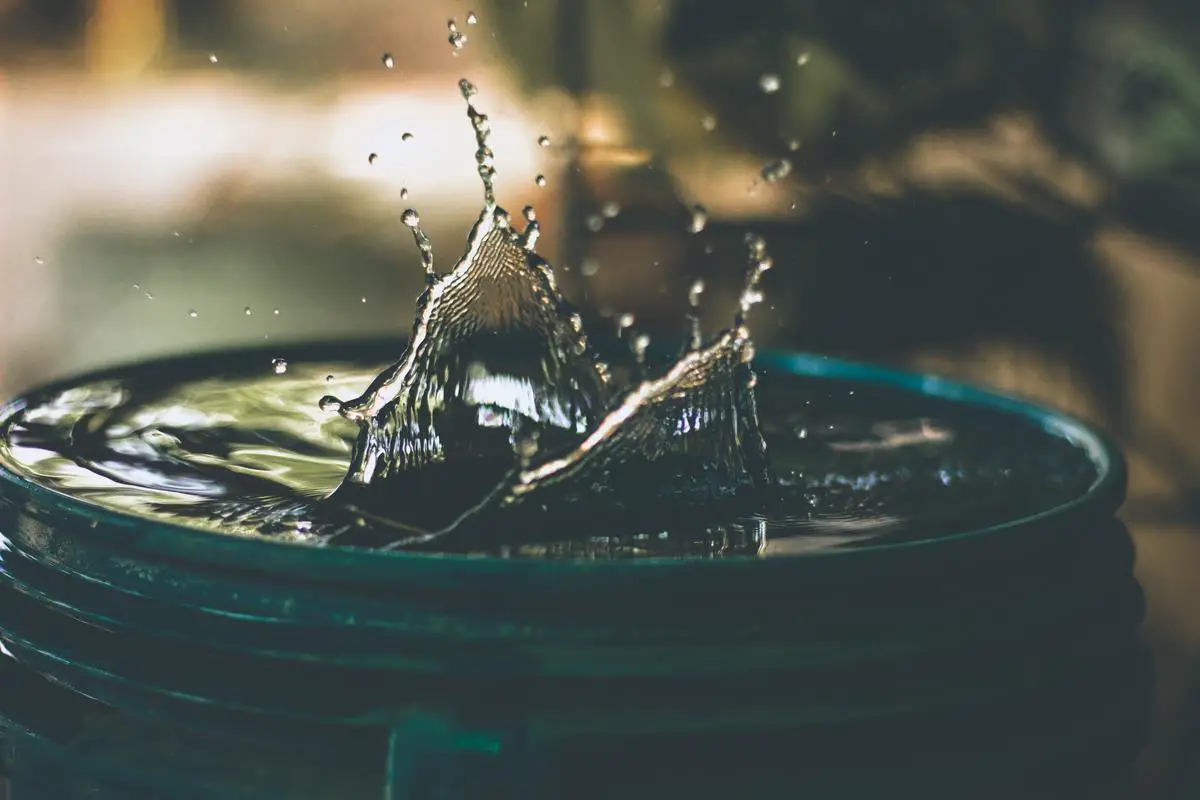
Photo by da_sikka_x on Unsplash
Drone fishing equipment and accessories
To successfully perform a drone fishing bait drop, it’s essential to understand and gather the right equipment and accessories. This guide will walk you through the different types of fishing equipment and accessories needed for a productive drone fishing experience.
1. Drone Selection
Choose a drone that has sufficient payload capacity, battery life, and stability to handle your fishing needs. Popular drone models for fishing include DJI Phantom 4, SwellPro SplashDrone 3+, and Autel X-Star Pro.
2. Release Mechanism
The release mechanism is an essential accessory that allows you to drop the bait at the desired location. There are several types of release mechanisms available in the market, including:
- a. Manual Release: This is the simplest and most inexpensive release system, where you attach the fishing line to the drone’s legs using a clothespin or similar device. When you reach the desired spot, you can tilt the drone or do a sharp turn, causing the line to detach and drop the bait.
- b. Mechanical Release: This is a more advanced release system that utilizes a servo system or winch to release the fishing line. These can be triggered by the pilot using a switch on the drone’s remote controller.
- c. Electronic Release: This system uses an electronic module to drop the bait at the desired location. Some popular electronic release systems include Gannet Dropper, Sky Rigger, and Reelax.
3. Fishing Line
Choose a high-quality braided fishing line that is strong enough to handle your intended catch. A 30-50lb test line should suffice for most drone fishing applications.
4. Rod and Reel
Select a sturdy rod and reel combination that can handle the drone’s payload capacity and the weight of your fishing line. It is recommended to use a heavy-duty spinning reel with a strong drag system to handle the additional pressure from the drone.
5. Swivel and Clip
To avoid any tangles in your fishing line during the bait drop process, use a swivel and clip to attach your fishing line to the drone’s release mechanism. This will allow the line to spin freely without tangling.
6. Bait
Choose the appropriate bait for the fish species you’re targeting. This may include live bait, cut bait, or artificial lures.
7. Safety Gear
Safety gear like a lifejacket, first aid kit, and sunscreen should always be carried along when performing drone fishing. Also, ensure that you have spare batteries, propellers, and waterproof storage for your drone equipment.
8. Smartphone or Tablet
Having a smartphone or tablet with the necessary apps for drone control, weather updates, and fish-finding can greatly enhance your fishing experience.
By gathering the appropriate drone fishing equipment and accessories, you’re well on your way to experiencing the excitement and productivity of drone-assisted fishing. Always ensure that you follow local regulations and practice safe flying in order to have a successful and enjoyable drone fishing bait drop experience.

Regulations and safety practices
Using drones for fishing bait drops has become an increasingly popular method for enthusiasts and hobbyists. This innovative technique allows for better accuracy, reaching a greater distance, and maximizing your fishing experience. Before embarking on your drone adventure, it’s essential to familiarize yourself with the necessary permits, regulations, and safety practices. This guide will provide you with the information needed to ensure a successful and legal drone fishing bait drop.1. Research Federal Regulations: a. Familiarize yourself with the Federal Aviation Administration’s (FAA) rules and regulations regarding drone usage. The FAA governs all civilian drone activities in the United States. Visit their website (www.faa.gov) for comprehensive information on Small Unmanned Aircraft Systems (sUAS). b. Register your drone with the FAA if your drone weighs more than 0.55 lb (250 g) and less than 55 lb (25 kg). Registration can be done online through the FAA’s DroneZone portal (https://faadronezone.faa.gov/).2. Comply with Local and State Regulations: a. Research your state and local laws for any specific regulations related to drone fishing bait drops. State and local authorities may have additional restrictions and guidelines that you need to adhere to. b. Consult local wildlife regulations and read the fishing guide in your state to understand the rules that govern fishing.3. Obtain Necessary Permits: a. Acquire any required permits related to drone usage in your area. Some federal, state, or local authorities may require special use permits or additional registration for specific activities, such as drone fishing bait drops. b. Obtain appropriate fishing licenses according to your state’s requirements.4. Follow FAA Safety Practices and Guidelines: a. Always maintain a visual line of sight with your drone during a bait drop. The FAA requires this to ensure you can quickly react to any potential hazards. b. Avoid flying over or near people, animals, or other vessels. Drones can be a potential hazard to wildlife and other individuals in the area. c. Review and follow the guidelines outlined in the FAA’s “Know Before You Fly” campaign. Visit their website (knowbeforeyoufly.org) for more information.5. Additional Safety Practices for Drone Fishing Bait Drops: a. Choose a suitable location to launch your drone and perform your bait drop. Consider factors such as wind speed, the presence of obstacles, and accessibility. b. Use a drone specifically designed for fishing or with a payload release system. Avoid using makeshift modifications that may affect your drone’s flight performance or safety. c. Begin with small bait weights to avoid overloading your drone. Keep in mind the payload capacity of your particular drone model. d. Be aware of nearby watercraft, swimmers, and other fishermen. Notify them if necessary to ensure their safety and avoid any conflicts or interference. e. Practice flying your drone in a controlled environment before attempting a drone fishing bait drop. Develop your flying skills and become comfortable with your drone’s controls, payload release mechanism, and emergency systems.By following these guidelines, you can confidently perform a drone fishing bait drop while adhering to regulations and prioritizing safety. Proper research, adherence to FAA rules, obtaining necessary permits, and practicing responsible flight techniques will make for an enjoyable and successful drone fishing experience.

Flying and maneuvering the drone
Choose the right drone for drone fishing bait drop by looking for a drone that can carry the weight of the bait and has good flight time, stability, and range. Opt for a drone with a payload release system, GPS, and long flight time, such as the DJI Phantom Series or another similar model.Learn the basics of flying the drone before attempting to fly the drone for fishing purposes, familiarize yourself with its controls and features. To gain experience and confidence, practice flying the drone in an open, obstacle-free space, such as a park or field.Control the drone by developing proficiency in maneuvering it through different directions, altitude adjustments, and maintaining a steady hover. Practice figure eight patterns to strengthen your understanding of the drone’s controls.Understand the drone’s safety features such as GPS-based return-to-home functionality and obstacle-avoidance systems, to prevent crashes and ensure the drone returns to you safely if it goes out of range or loses signal.Test your drone over water before attempting drone fishing bait drop. Be cautious of any wind, as it can affect the drone’s stability and control. Consider using a drone fishing flotation device as an additional safety measure.Check weather conditions regularly, including wind speed, temperature, and rainfall before flying the drone. Avoid flying the drone in strong winds or storms.Drop the fishing bait by attaching the bait release system according to the manufacturer’s instructions. Practice flying to the desired location while carrying the bait, maintaining a steady altitude and speed. Once you’ve reached the location, release the bait through the system’s controls.Balance the drone’s flight endurance with the bait dropping process by taking note of the drone’s battery life and ensuring there is enough power to return once the bait has been dropped.Consider investing in a first-person view (FPV) system to help with flying and maneuvering the drone and view what the drone’s camera sees in real-time. Bring a spotter nearby who can keep an eye on the drone and its surroundings when drone fishing, to ensure everyone’s safety and that the drone remains in sight at all times.
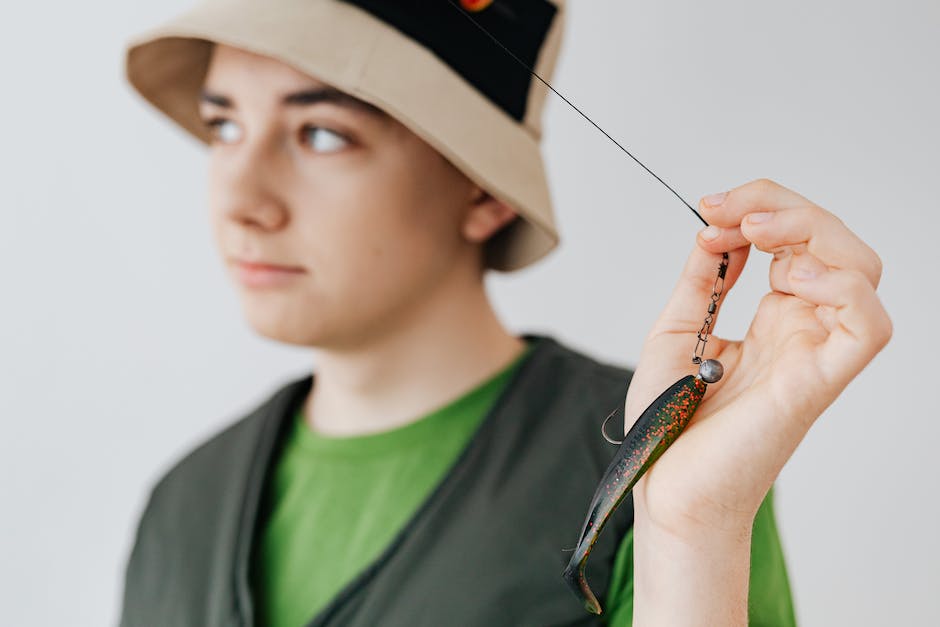
Performing the bait drop
Step 1: Gather your equipment
Before attempting a drone fishing bait drop, make sure you have the following equipment:
- A drone with a payload release system: This can be a store-bought drone with a built-in release system, or you can consider purchasing an attachment like a payload release mechanism for your drone.
- Fishing gear: Along with your drone fishing bait drop system, you’ll need a fishing rod, line, hooks, and bait.
- A fully charged drone battery: Ensure your drone’s battery is fully charged before attempting a bait drop.
Step 2: Assemble your drone and payload release system
Assemble your drone according to the manufacturer’s instructions, ensuring that all parts are secure and functional. Attach the payload release system or bait release mechanism to your drone, making sure it is secure and functional.
Step 3: Select your bait and create a stable attachment
Choose your bait – this can be live bait or artificial lures, depending on your fishing preference. Ensure the bait is securely attached to the payload release system or bait release mechanism. You might need a small weight to keep the bait stable during flight.
Step 4: Connect the fishing line
Attach the fishing line to your payload release system or bait release mechanism, ensuring the line is secure but can still be easily released. Be sure to provide enough slack in the fishing line to avoid any tangles during flight.
Step 5: Choose a suitable location for flying and bait drop
Select a suitable location for drone fishing bait drop, preferably an area free of obstacles and people. Make sure you follow local regulations regarding drone flying and fishing.
Step 6: Familiarize yourself with the drone controls
Before attempting a bait drop, familiarize yourself with your drone’s controls – understand how to fly, control altitude, and release the payload.
Step 7: Fly the drone to the desired location
Once you are confident with your drone’s controls and the bait is securely attached, take off and fly the drone to your desired fishing location. Keep a proper line of sight and maintain a safe altitude while flying the drone.
Step 8: Release the bait
When the drone reaches the desired location, use the payload release system or bait release mechanism to release the bait into the water. Ensure the release is smooth and does not strain the fishing line or rod.
Step 9: Monitor the fishing line
As the bait drops into the water, keep a close eye on your fishing line for any sudden movements or tension, indicating a fish biting the bait.
Step 10: Retrieve the drone
After successfully performing the drone fishing bait drop, safely retrieve the drone by flying it back to your location and carefully landing it.
Step 11: Set the fishing rod and wait for the catch
Set your fishing rod up in a holder or carefully hold it while waiting for a fish to bite. Be patient and enjoy the benefits of drone fishing bait drop in reaching spots you couldn’t access before.
Remember, practice makes perfect! The more you perform drone fishing bait drops, the better you’ll become at flying, positioning, and releasing the bait effectively. Good luck and happy fishing!

Drone maintenance and care
Drone fishing is an exciting hobby that has gained popularity among fishing enthusiasts and hobbyists. To keep your drone and fishing gear functioning effectively, it is important to maintain and care for them properly. The following instructions are essential in ensuring a long-lasting use of your drone and fishing equipment.1. Inspect your drone after each use: After each fishing session, thoroughly examine your drone for any damage, wear, or tear. Look for any debris caught in the motors or propellers and check for any loose or missing screws.
2. Clean your drone: Use a soft brush or toothbrush to gently remove any sand or dirt from the drone’s crevices, vents, and motors. Wipe the surface with a microfiber cloth to remove any grime or residue.
3. Clean the propellers: Remove the propellers from the drone using a screwdriver. Carefully wipe both sides of the propellers with a microfiber cloth to remove dirt and debris.
4. Disinfect your drone: Mix a solution of isopropyl alcohol (70%) and water. Use a lint-free cloth to wipe down the drone, paying special attention to the motors and electronic components. Make sure not to soak the cloth, as excess moisture can harm the drone.
5. Rinse your drone if exposed to saltwater: If you have used your drone for fishing in saltwater, rinse your drone thoroughly with freshwater to prevent corrosion. Make sure to remove the battery and all other removable components before rinsing the drone. Allow it to dry completely before reassembling.
6. Clean and maintain the fishing equipment: Wash the fishing line, reel, and hook with fresh water and a mild detergent. Rinse well and allow the equipment to dry completely. Lubricate the reel with a suitable lubricant or WD-40 to prevent rust and ensure smooth operation.
7. Check and charge batteries: Inspect the battery for any signs of damage, swelling or leakage. Charge the battery according to the manufacturer’s instructions, and store it in a cool, dry place when not in use. Do not overcharge the battery or store it fully charged, as it may reduce the battery life.
8. Store your drone and fishing gear properly: When not in use, keep your drone and fishing equipment in a cool, dry place away from direct sunlight, extreme heat, or moisture. Store the drone with the propellers removed and the battery disconnected to protect the components.
9. Complete regular maintenance checks: Periodically, inspect your drone and fishing gear for wear or damage. Monitor the motors for unusual noises or decreased performance. Repair or replace any damaged components as needed.Proper drone maintenance and care are essential for a successful and enjoyable drone fishing experience. By following these guidelines, you can ensure the longevity and performance of your drone and fishing equipment. Happy drone fishing!
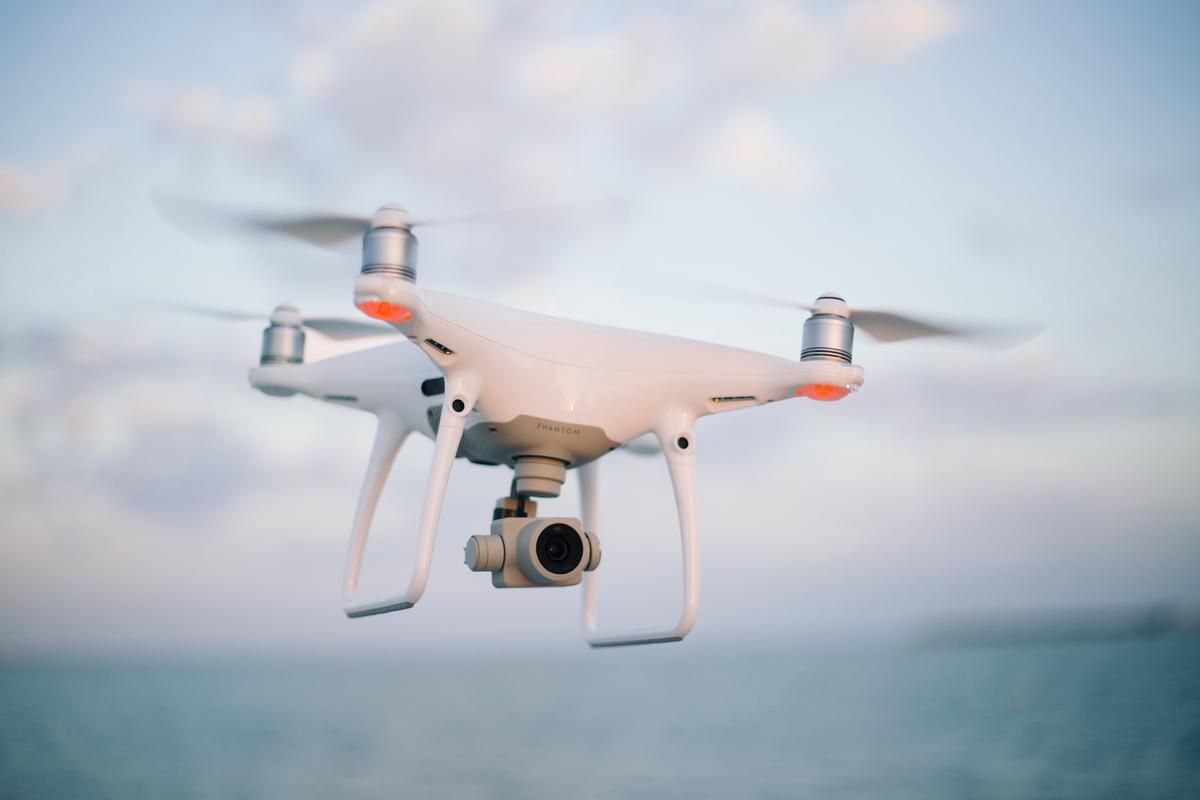
Photo by joshsorenson on Unsplash
Now that you are equipped with knowledge about drone fishing, it’s time to put it into practice. Experience the thrill of casting your line further than ever before, and discover the potential of this innovative fishing method. By choosing the right drone, understanding the necessary equipment and accessories, following regulations and safety practices, and honing your drone flying skills, you’ll be well on your way to mastering drone fishing bait drops. Happy fishing!
Originally posted 2023-05-26 17:45:56.

